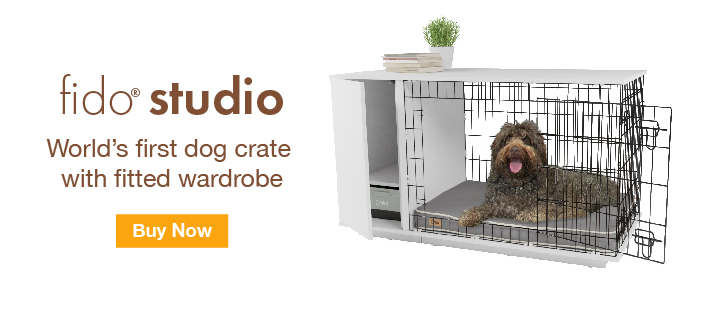In the diverse world of canine coats, every dog's outerwear is as unique as their personality. But have you ever wondered why dogs come draped in such an array of fur styles? Be it braving extreme weather conditions, aiding in specific tasks, or simply dazzling us with their distinct charm, evolution holds the secret to the In the diverse world of canine coats, every dog's outerwear is as unique as their personality. From short coats to long-haired and every coat in between, each type has its own story to tell. Join us as we uncover the nuances of canine coats, helping you discover which dog coat type is best for you.
Why do dogs have different coat types?
Over generations, dogs have developed a multitude of different coat types due to a combination of environmental factors, selective breeding, and the need to survive in varying climates. From the arctic conditions of the husky's homeland to the hot terrains of short-haired breeds like the chihuahua, these coats serve as nature's ingenious solutions, offering insulation, protection, and even breed-specific characteristics.
Whether it's the double coats of cold-resistant breeds, the elegant flowing locks of long-haired companions, or the utilitarian advantage of wire-haired varieties, each coat type reflects a tailored response to particular environmental demands. Understanding the origin and purpose of these varied coats not only sheds light on the rich tapestry of dog diversity but also guides in selecting the ideal furry companion suited to your specific lifestyle and environment.
The different types of dog coats
From short and sleek to long and flowing, each dog's coat tells a tale of uniqueness, offering a delightful spectrum of cuddly companions just waiting to charm their way into your heart.
Short-haired coats: Sleek and low-maintenance, dogs with this coat type include beagles and Dalmatians. These breeds shed less, requiring minimal grooming and upkeep and are ideal for busy households.
Medium-haired coats: Displayed by breeds like the cocker spaniel and border collie, these coats need moderate grooming to help prevent tangles and mats.
Long-haired coats: Elegant and often requiring more maintenance, breeds like the Afghan Hound and Havanese boast luxurious, flowing locks that demand regular grooming to prevent matting. These breeds are best suited for homes that can provide the maintenance needed to keep their fur fabulous.
Double coats: Worn by cold-resistant breeds like Siberian huskies and Alaskan malamutes, this dual-layered coat offers insulation in winter and a cooling effect in summer. These dogs do require a bit of attention, especially when they’re wet, and need extra brushing in the hotter months.
Silky coats: Found in breeds like the silky terrier, these coats are long and soft and require regular brushing to keep their flowing texture intact. Just remember to be gentle when teasing out those tricky tangles!
Corded coats: The puli and komondor are two examples of breeds with distinctive dread-like cords that resemble an old-fashioned mop. While the maintenance of these coats is not difficult, it is time-consuming to ensure debris and tangles stay at bay.
Curly coats: Seen in poodles and curly-coated retrievers, these tightly curled coats may be good at minimizing shedding but they do require a regular grooming routine to avoid matting. Professional groomers and vets are always good resources to help advise the best coat upkeep practices for these breeds.
Wiry coats: While the name may imply these coats are rough to the touch, that isn’t necessarily true for all breeds included in this category. Exhibited by wire fox terriers and griffons, these coarse (yet sometimes smooth) and protective coats need moderate maintenance to help prevent tangles. The good news? These breeds don’t shed!
Hairless coats: Virtually hair-free breeds like the Chinese Crested or the Mexican Hairless require virtually no grooming. And no hair means no shedding. But just because these exotic dogs are fur-free doesn’t mean they’re maintenance-free. Regular baths are still needed to keep their exposed skin healthy.
Hypoallergenic coats: Low-shedding varieties like the cockapoo or poodle, are often favored by allergy-sensitive individuals due to their reduced dander and shedding.
Each of these coat types brings its unique charm and care requirements, catering to various preferences and needs of dog enthusiasts.
What are the lowest-maintenance dog coats?
Looking for a low-maintenance furry friend? Some dog coat types are easier to handle when it comes to grooming. Short-haired dogs, like beagles, boxers, and Dalmatians, boast coats that require less upkeep. These sleek coats shed less and are easier to manage with a quick brush just once or twice a week. Additionally, breeds with wiry or curly hair, such as poodles, schnauzers, and terriers, tend to shed minimally and are less prone to tangling or matting.
It's essential to note, however, that while these coat types may be simpler to maintain, regular grooming and care are still crucial for your furry pal's overall health and happiness. Remember, regardless of coat type, regular baths, nail trimming, and ear cleaning are all vital to keep your dog looking and feeling their best.
Omlet and dog coat types
At Omlet, we understand the diverse needs of all dogs and their varying coat types. With a keen eye on pet comfort and convenience, we design our products to accommodate the requirements of every dog and their pet parents. Whether it’s the ingenuity of our easy-to-wash covers on the Topology Dog Beds or the warmth and snuggleability of our dog blankets, we make products that cater to every coat.







Comments
Madyleen, 8 May 2018
I like the dogs!!!!!!!
Maria, 23 February 2018
Fantabulous piece of work. Thank you for sharing this information